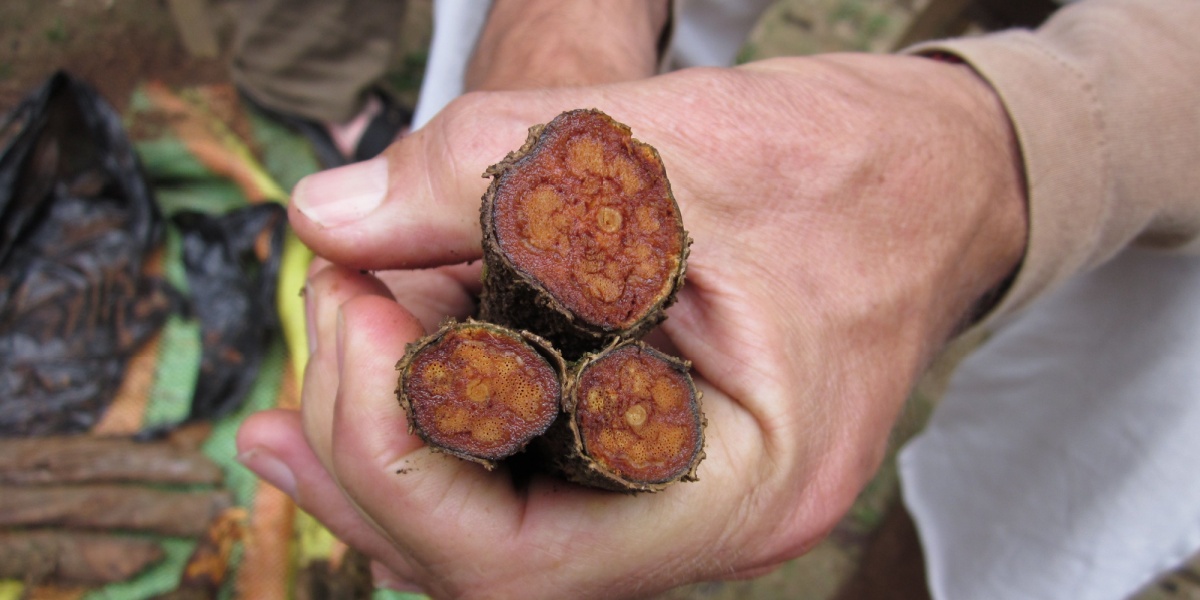Ayahuasca is a psychoactive decoction boiled from plants indigenous to the Amazon. The key ingredient is Banisteriopsis caapi, a vine. When ayahuasca is made, this caapi vine is synthesized together with other botanicals, such as Psychotria viridis, a perennial, shrubby flowering plant that contains the hallucinogenic compound dimethyltryptamine (DMT).
In settings where ayahuasca has cultural and spiritual roots, ceremonies revolve around healing, community bonding, and introspection. However, over the last few decades, interest in ayahuasca’s potential therapeutic benefits has spread beyond its traditional environment, naturally casting a light on its legal status.
This article explores the current legal landscape of ayahuasca in the United States. It takes a closer look at the federal regulatory framework for DMT, variations in state and local laws, and the prospect of decriminalization. It gives a balanced perspective by presenting favorable views and public concerns supported by legal precedents and ongoing legislative debates. [1]
- DMT, a main component of ayahuasca, is a Schedule I substance of the Controlled Substances Act, but certain religious groups have pursued exemptions from this act.
- State laws aren't consistent in legal application, with some municipalities adopting limited decriminalization measures for plant-based entheogens.
- Ongoing advocacy and research may reshape legal restrictions, although concerns about safe usage and community well-being persist.

Understanding ayahuasca and its composition
Ayahuasca contains psychoactive beta-carbolines (like harmine and harmaline), which are monoamine oxidase inhibitors. These inhibitors enable DMT to be orally active, derived from Banisteriopsis caapi. Dimethyltryptamine (DMT) is found in certain companion plants, such as Psychotria viridis or Diplopterys cabrerana. DMT, when taken alone, is usually snorted, smoked, or injected. It's used for its psychoactive effects. It tends to have an intense but short duration that doesn't last as long as other hallucinogens, such as LSD.
DMT is a well-known hallucinogen, and ayahuasca can cause strong visions and emotional reflection. It holds cultural and spiritual importance. In parts of the Amazon, people have used ayahuasca in communal and religious traditions for generations. Healers, known as curanderos, guide ceremonies where it’s taken for healing, insight, and connection.[2][3]
In the United States, people seeking alternative healing methods sometimes view ayahuasca as a transformative tool for psychological growth. However, research into its long-term safety and other believed therapeutic potential is ongoing. [3]
Federal legal status of ayahuasca in the United States
At the federal level, the Controlled Substances Act (CSA) classifies DMT as a Schedule I substance. Schedule I drugs do not have recognized medical uses in the U.S. This legal designation triggers strict controls on the possession, brewing, and distribution of plant-based DMT. [4]
When used in ayahuasca ceremonies, DMT, although derived from natural plant materials rather than clandestine laboratories or synthetic processes, is part of the brew. The presence of a Schedule I drug within any brew (like ayahuasca, for example) places ayahuasca under that same legal category. Thus, as mentioned, brewing, distributing, or consuming ayahuasca will, under such legal presumption, violate federal law. Even though enforcement of this is inconsistent, there is the possibility for participants and organizers to be criminally charged.
Federal restrictions stem from mid-20th-century drug policies that aimed to curb psychedelics, like LSD, psilocybin, and others suspected of causing widespread social harm. During this time, DMT was added to the CSA as a Schedule 1 drug. Although there is new scientific evidence regarding the addiction potential of psychedelics and promising therapeutic research, the classification has not changed. [5]
Religious exemptions and legal precedents
Despite the CSA’s rigidity, some religious or spiritual communities in the U.S. have gained permission to use ayahuasca from the courts. There are specific cases where the court has determined that religious freedom and certain drug prohibition laws are prima facie; in other words, it’s legally sufficient to establish a fact or a case unless disproved by another. Thus, in some instances, religious freedom outweighs prohibition. Only two religious organizations—Santo Daime and Uniano de Vegetal (UDV)—have official exemptions for religious uses of ayahuasca under the federal Religious Freedom Restoration Act (RFRA). [6]
The União do Vegetal (UDV) case is a notable example in which the U.S. Supreme Court affirmed a religious exemption for the sacramental use of ayahuasca (this involves its consumption within a spiritual or religious ceremony). This Supreme Court ruling hinged on the RFRA, which requires the government to meet a high standard before interfering with sincere religious practices. [7]
Religious groups seeking to use ayahuasca legally, however, typically undergo an arduous process to obtain such approval. The government scrutinizes each request. They examine and validate the sincerity of the organization’s beliefs, its ceremonial framework and practices, and the measures in place to ensure safety. Even after exemptions are granted, legal questions persist about how these ceremonies operate and whether they remain strictly within the boundaries set by the exemption. This similar to restrictions placed on the Native American Church and the use of peyote in cultural and religious ceremonies.
State and local regulations
U.S. states many times mirror federal law by classifying DMT as a controlled substance. However, enforcement is not equal, and some localities have decriminalized or deprioritized plant-based entheogens, including ayahuasca. These city-level reforms do not legalize ayahuasca outright; they merely instruct law enforcement to focus on higher priorities.
Below is a simplified table that reflects the current landscape. Note that legislation can shift quickly, and city ordinances or county guidelines sometimes differ from state policies.
| State | Legal status | Additional Notes |
|---|---|---|
| California | DMT remains illegal under state law. | Several cities, such as Oakland, Santa Cruz, and Berkeley, have decriminalized certain plant-based entheogens. These efforts are local, not statewide. |
| Colorado | DMT is decriminalized for personal use. | In November 2022, voters passed Proposition 122, decriminalizing natural psychedelics (including DMT) for adults 21+. A regulated access program for licensed healing centers is expected by late 2024. |
| Oregon | It's still illegal but decriminalized for small amounts. | Measure 110 (2020) decriminalized possession of small amounts of all drugs, including DMT. Measure 109 legalized psilocybin therapy, but it does not cover DMT. |
| Massachusetts | DMT remains illegal statewide. | Some cities, like Somerville, Cambridge, and Northampton, have deprioritized enforcement against entheogens. This is non-binding and mostly symbolic. |
| Washington | DMT is a Schedule I substance and is illegal under state law. | Some cities, such as Seattle, Port Townsend, and Tacoma, have passed local resolutions deprioritizing enforcement. No statewide decriminalization. |
| Other states | It is illegal in most jurisdictions. | A few local efforts to deprioritize or decriminalize exist, but there's no widespread reform. Some states are studying the issue. |
| Federal law | DMT remains a Schedule I controlled substance under federal law. | Possession, distribution, or use is illegal regardless of local laws. Federal enforcement varies, but is still possible. |
Clarifications:
- Decriminalization ≠ legalization usually means reduced or eliminated criminal penalties, but does not make its possession or use legal.
- Natural vs. Synthetic DMT: Most of these local reforms apply only to naturally occurring entheogens (e.g., plants like chacruna or ayahuasca), not synthetic DMT.
- Therapeutic use: Only psilocybin has been legalized for therapeutic use (in Oregon); DMT is not yet included in any such programs.
Regulatory differences underscore the slow shift toward allowing controlled psychedelic use, although ayahuasca has not received the same attention as psilocybin mushrooms in these early reform efforts. Ceremonies still operate in a legal gray area without formal state recognition.
Legal risks and considerations for individuals
The legal implications of participating in ayahuasca ceremonies are different across states and localities. Under federal law, possession or distribution of DMT is a criminal offense. Depending on the circumstances, participants and organizers might face charges if authorities choose to enforce existing statutes. [7]
Non-indigenous participants who seek out these rituals must consider the cultural context. Traditional ceremonies have specific spiritual and indigenous frameworks, and local customs may not translate seamlessly into a weekend retreat in the United States. Some Indigenous leaders criticize what they view as the commodification of sacred traditions. However, people who participate in these ceremonies face uncertain legal territory, especially without formal religious or community backing.
Movements toward decriminalization and future outlook
Ongoing advocacy efforts aim to decriminalize or reclassify certain psychedelics, including ayahuasca. Reformists argue that controlled usage within ceremonial or therapeutic settings poses fewer societal harms than prohibition-era policies suggest. They also point to growing evidence of potential mental health benefits, such as relief from depression or anxiety, which may galvanize broader legislative interest. [8]
On the other hand, there are community concerns. Opponents of broader acceptance of decriminalization note that ayahuasca can induce powerful psychological experiences, and setting standards for safe practice can be complex. Critics also purport that there is a risk of unregulated retreats charging high fees without providing adequate screening or follow-up care. These factors complicate the path toward mainstream acceptance or broad legality. [9]
Nonetheless, policy shifts in certain states, local decriminalization efforts, and religious exemptions underscore that the ayahuasca conversation is moving forward. Many lawmakers appear open to re-evaluating decades-old drug policies, especially if additional research demonstrates medical or cultural merit. [1]
Conclusion
Ayahuasca’s legal status in the United States remains a blend of federal prohibitions, patchwork state or municipal stances, and narrow religious exemptions. These layers of law keep participants, ceremonial leaders, and advocates navigating a shifting landscape.
With more clinical research emerging and localized decriminalization efforts expanding, ayahuasca’s legal profile may continue evolving. Those curious about the brew should tread carefully, respecting local regulations and cultural origins while staying informed about potential legal consequences.

-person-thumbnail.jpg?v=1758880627)
-guide-detail.jpg?v=1722503085)
-guide-detail.jpg?v=1722502725)
-(1)-guide-detail.jpg?v=1722502904)